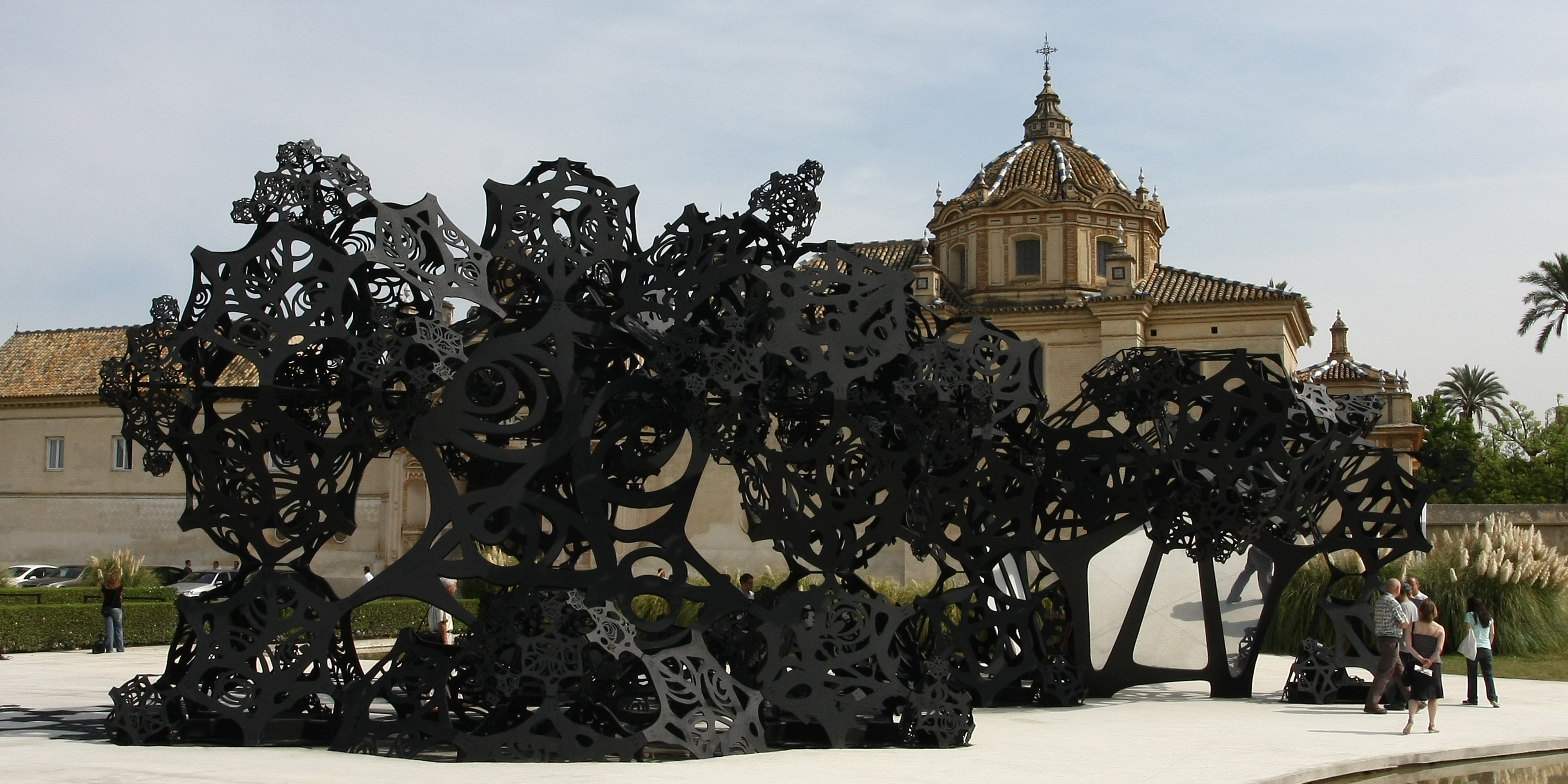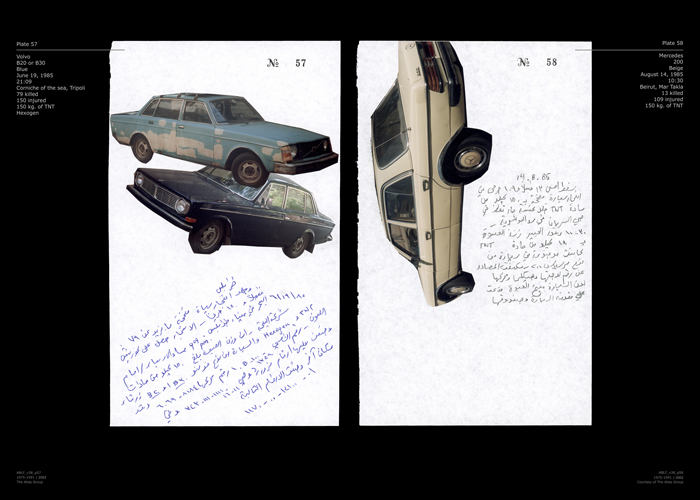
Matthew Ritchie, “The Morning Line” (installation view, Seville, Spain), International Biennial of Contemporary Art of Seville, October 2, 2008 – January 11, 2009. Photo by German Leal. Courtesy of the artist and Andrea Rosen Gallery, New York.
Artist Matthew Ritchie, speaking at the Phillips tomorrow as part of the Conversations with Artists series, relies on the tradition of drawing to create his innovative, interactive new media works. He considers the drawings the iteration of ideas – influenced and inspired heavily by his research in the sciences and information technology. Using computer software, he scans and layers the drawings until the result is a sculptural illustration such as The Morning Line (above). Beautifully simplistic, the unit is a seemingly endless system of ideas that provide a random and unprecedented experience.
In his Art21 profile Ritchie explains his interest in science for his work as “a way of having a conversation that’s based on an idea of looking at things.”
Megan Clark, Manager of Center Initiatives

